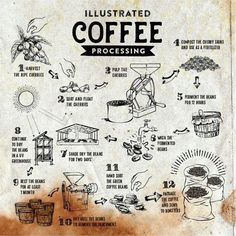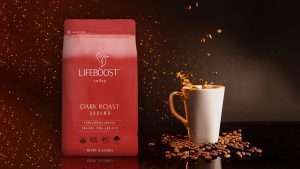“Java Jive”: Let’s Learn Some Good & Bad About Coffee
 The 1940 tune “Java Jive” , popularized by The Ink Spots & The Manhattan Transfer, opens “I love coffee, I love tea…”. If you love a morning pick-me-up, then keep reading. You’ll want to learn more about the good & bad about coffee!
The 1940 tune “Java Jive” , popularized by The Ink Spots & The Manhattan Transfer, opens “I love coffee, I love tea…”. If you love a morning pick-me-up, then keep reading. You’ll want to learn more about the good & bad about coffee!
The Good
Coffee does have several “ups”, not including the caffeine boost to help you through your morning. According to Dr. Z, Natural Living Family, coffees benefits include:
- Anitoxidents
- Enhance Physical Performance
- Boost Cognitive Function & May Prevent Cognitive Decline
- Fights Against Depression
- Boost Liver Health
- Lower Risk of Diabetes & Possibly Heart Disease
- Increase Your Lifespan
Even though there is some evidence that our morning ‘cuppa joe’ can be a healthy indulgence, what goes up, generally comes down.
The Bad
 Dr. Z explains coffee is one of the mostly high sprayed crops grown today. As well, one study found that over 90% of low quality coffee beans contain mold before processing even begins. So, you want to look for 100% Arabica, 100% Columbian and so on, when choosing a coffee blend. Be cautious of “blended” coffees. A blended coffee is a mix of high quality and low quality beans and/or beans grown in different regions mixed together. The final product isn’t as high quality as you think. Other side effects from may include:
Dr. Z explains coffee is one of the mostly high sprayed crops grown today. As well, one study found that over 90% of low quality coffee beans contain mold before processing even begins. So, you want to look for 100% Arabica, 100% Columbian and so on, when choosing a coffee blend. Be cautious of “blended” coffees. A blended coffee is a mix of high quality and low quality beans and/or beans grown in different regions mixed together. The final product isn’t as high quality as you think. Other side effects from may include:
- Insomnia or Nervousness or Headaches
- Temporary Rise in Blood Pressure
Sugar, milk, creamers and flavor shots we put in coffee don’t always benefit us, either. So check out the nutrition facts on Starbucks favorites. With an extra shot or whip, you could be drinking your entire calorie allowance for breakfast.
The Better
Dr. Z and his staff at Natural Living Family have done some research and recommend Life Boost Coffees. Here’s why:
- Certified Organic

- Low Acid
- Shade & Mountain Grown
- Single Origin
- Tested For Chemicals & Over 400 Other Toxins
In his recommendation, Dr. Z notes:
- “[LifeBoost] coffee plants are grown in a shaded mountain canopy, the first step that ensures minimal mycotoxin presence in the coffee from the very start.
- Then, the coffee is prepared using a wet and dry process (with variations) to avoid mycotoxins during processing.
- After washing, the beans are pulped (their outer covering is removed) where they dry in the sun for a few days. This is an extra measure to ensure any molds or mycotoxins are eliminated.”
Like any other food we consume, quality is key. So, read the label, do some research and learn the good & bad about all your food. Be an educated consumer. Read the full article from Natural Living Family.
